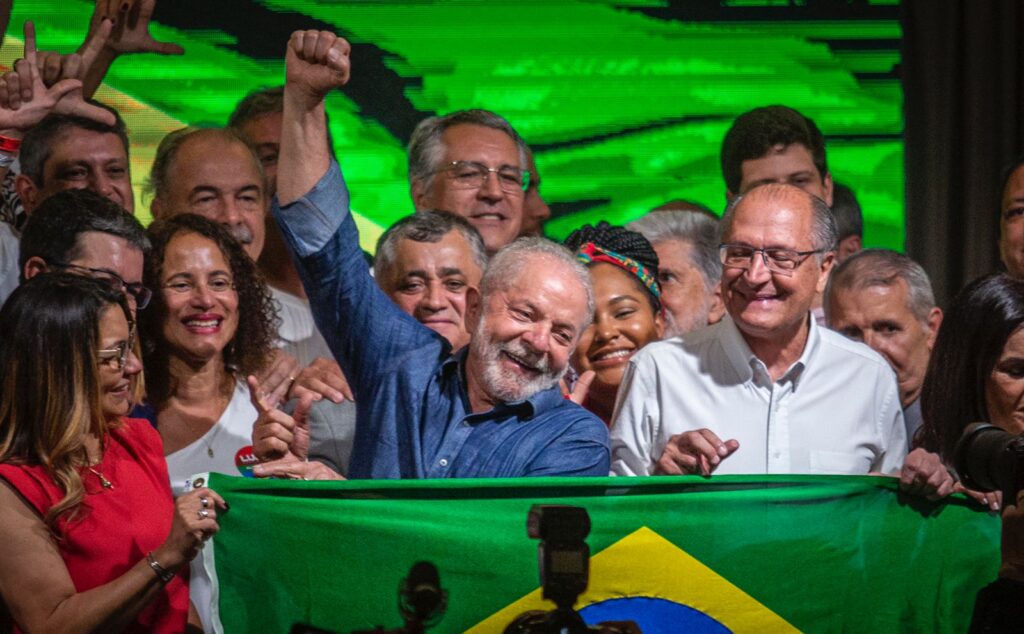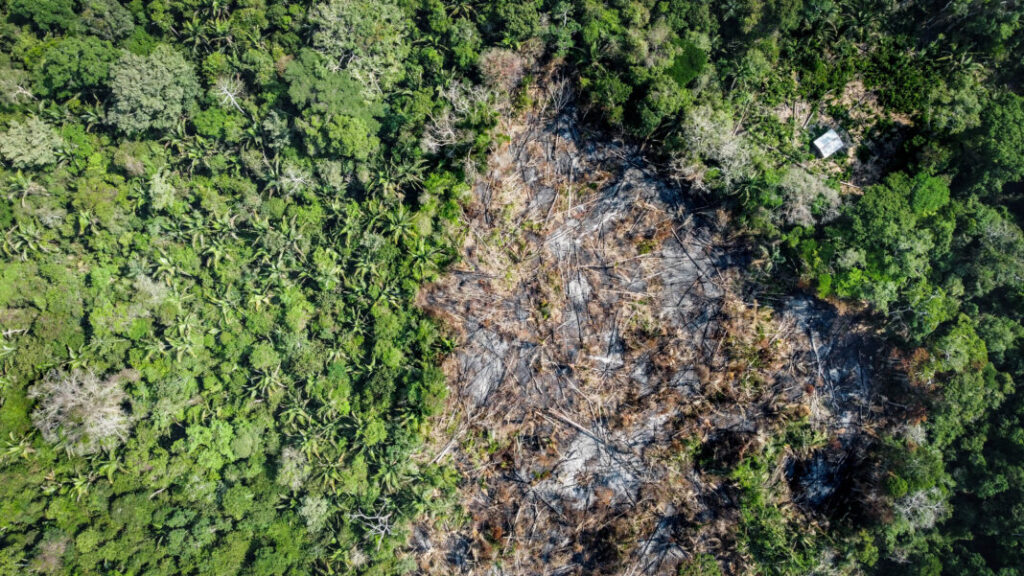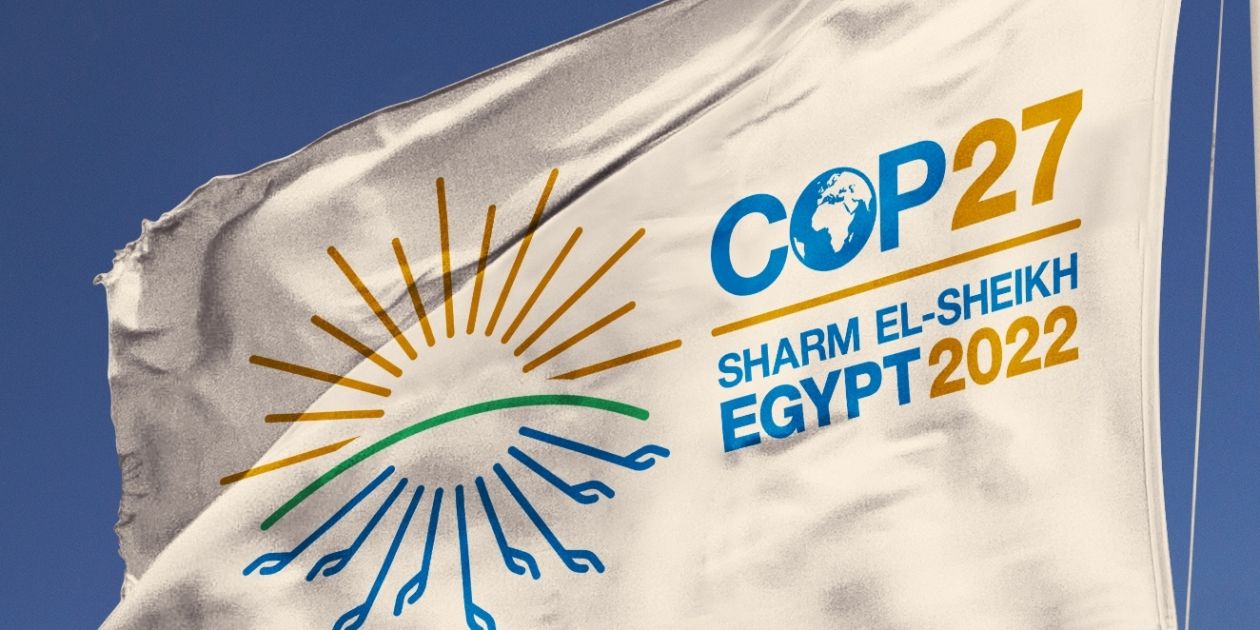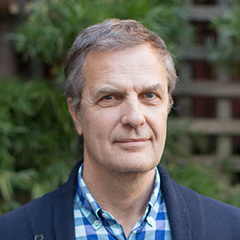Government officials, researchers, and climate activists from around the world will descend on Egypt’s Sharm El Sheikh next week for the United Nations’ 27th annual COP summit. The event comes amid increasing signs of climate distress, from more destructive hurricanes to longer and more damaging wildfire seasons and monsoons, drought… the list is long. It also comes on the heels of an historic election in Brazil that could determine the fate of the Amazon rainforest. Daniel Nepstad is the founder of the non-profit Earth Innovation Institute, which promotes strategies for sustainable development in the Amazon and other tropical forest regions, and a lead author of the 5th IPCC Assessment Report. He says this year’s COP could lead to agreements that open the door to much-needed funding for climate strategies in Brazil and globally.
The UN’s annual climate conference is next week in Egypt. This will be the 27th such gathering in as many years. Do you expect anything to come out of this meeting?
There are really three COPs. There are the official negotiations. And I am hoping that out of these comes clarity on a major new carbon market mechanism that will be key to funding climate strategies in the Amazon, for example. Last year’s COP produced a set of rules but left a lot still to be decided. The second COP are all the parallel meetings. There will be several Amazon governors at the conference, and it’s a great chance to get an hour with them. When you visit with them in Brazil, you’re lucky to get a few minutes. The third COP is all the manifestations: the protests, the frustration – especially among youth. A lot of promises were made last year in Glasgow, and so this year is about seeing how much progress has been made. There has been some, but not nearly enough.
Developing countries argue wealthier nations must do more to foot the bill for the climate damage they have largely wrought. That remains a major sticking point. Why?
In official COP terms it is called “Loss and Damage” to climate change. And the US is by far the leading contributor. We should therefore be helping those countries hit the hardest. But the US position has been, “We can’t deal with it. It’s too big.” There is a fear it would become such a huge financial number that it would break the bank. So, there is a tacit agreement among developed nations that they are not going to go there. Even the hundred billion per year promised in 2009 in Copenhagen – which was supposed to be the grand deal. President Obama flew in. He worked out a deal with Beijing, but it never happened. And under the UN Framework there is no authority to force rich nations to do what is right. It’s all based on consensus.
A lot of your work in Brazil is focused on bringing disparate groups to the table. Can you talk a bit about that work? And how it might extend to a global framework?
Back in 2015 when Paris COP took place… that was a big deal, as it gave us the global climate regime we are in now. In the lead to that conference, I asked the governor of Mato Grosso, Brazil’s largest state, what he planned to roll out in terms of a plan. And he said he wasn’t sure. So, we talked about getting all the sectors of the state together… the NGOs, Indigenous Peoples, small farmers, and the private sector, to see if we could come up with a shared vision. He signed off on it in August and by November an agreement was reached. Our role was to work behind the scenes — alongside other organizations — with the agribusiness sector, which at the time was angry with the environmental sector. In that process we were able to find consensus points all sectors agreed with. And I feel like that demonstrated that you can bring people who have a history of mutual hatred and a complete lack of dialogue to the table. It is possible to find common points and a shared opinion on what the future could look like. I am positive every landscape around the world has that potential.

Brazil just selected its next leader in a contentious and deeply divisive election. What are you hearing from contacts there about the results?
High poverty areas and remote rural communities went for Lula. But in fact, Bolsonaro is very big in the Amazon. Much of the region voted heavily in his favor, including regions where agribusiness is strong. And the idea that the elections were rigged is also very strong among his supporters. I’ve been to Brazil three times this year, and I am always surprised how many people I meet who I would never suspect to be supporters of Bolsonaro, and yet they are. And it ties into a frustration that the country still is not getting its act together… too many regulations, too much corruption, not enough freedom, whether of speech or for the private sector. Brazil is extremely bureaucratic… so I can see why those frustrations are there.
What is Lula’s past record on the Amazon?
Lula presided over the biggest decline in Amazon deforestation in history, the biggest decline in deforestation seen anywhere else in the world. When he took office in 2002, deforestation in the Amazon was soaring. And it was a combination of factors, but basically people were making a lot of money, and to make money you had to clear the forest. Lula saw that as a threat to the trajectory that he envisioned for Brazil, which he wanted to see emerge as a serious international player. So, he prioritized Amazon deforestation, launching a nationwide strategy that was very heavy on sticks but light on positive incentives. Toward the end of his term, deforestation began to climb again, and it has been rising ever since, much more so under Bolsonaro.

Do you anticipate Lula will take a similar approach this time?
He’s in a tough situation. He does not have the positive economic scenario he had when he started his first term. He doesn’t have a sympathetic congress. So, the question is, will he go back to the old strategy of command and control, or will he try something new. I think he needs to try something new. He can’t go back to what he did previously.
What might that approach look like?
More and more there are investors who want to be part of a positive story in the Amazon. Even three years ago that wasn’t there. Back then it was all about cutting the Amazon off from international markets to save it. There is now the emergence of a positive approach to Amazon deforestation that I think is very promising. Many of the governors in the Amazon are aligned with Bolsonaro — and they’ve gotten plenty of of negative media. But they are also serious about forests for pragmatic reasons. They recognize the role the private sector has to play in the development of the Amazon. They know that if they don’t get deforestation under control, investors won’t come. Lula’s election was a great result. But he will now have to align with these governors, and with agribusiness and the farm sector if he is going to get anything done.
What does the Amazon mean for Brazil economically, culturally, politically?
The Amazon is the major source of pride of many Brazilians and the major headache of many other Brazilians. It’s a source of pride that most of it is in Brazil and therefore Brazil is the main steward of the world’s largest tropical rainforest. The source of headache is that deforestation rates define Brazil’s international diplomacy. When rates are up Brazil is cut out, reprimanded, and scolded. When rates are down it’s very different. That divide parallels the divide of this election.
What about the planet? What does the Amazon Forest mean for climate change?
Everyone should care about the Amazon because it is such a big player in climate change. The CO2 stored in the Amazon is equivalent to all global emissions burned over the last decade. Even half of that going into the atmosphere would mean we make it that much harder to avoid catastrophic climate change.
What advice would you give reporters when it comes to covering this topic?
I would emphasize that it is not too late. There are a lot of positive things happening, including in the Amazon, that are not coming to light and need to… new startups, the bioeconomy, local political leaders deciding to do the right thing. Seventy two percent of the Amazon Forest is in a state or province where the regional government has developed a decent plan to keep the forest standing. What they are missing is money. And that money could now be arriving. If that is also complimented by new sorts of enterprises, new sustainable products coming out of the Amazon, it could be that we are at the beginning of a regenerative phase of Amazon development.





